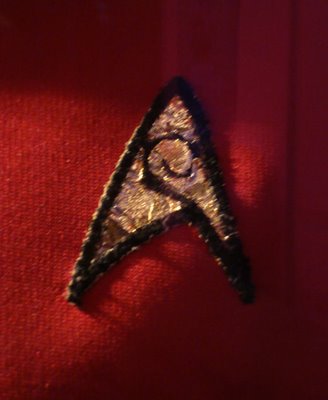Really enjoying Ina Rae Hark’s BFI TV Classics book on Star Trek. To write it, she watched 700 hours of cumulative Trek, and it shows in her comprehensive and confident discussion of the original series alongside the many spinoffs it spawned. Hark writes as an aca-fan, and her desire to analyze Trek as Trek results in passage after passage of original insights that balance critical readings with a respect for the show’s internal logic:
One choice made by the producers was to divide the specialities represented into three broad categorizations, denoted by the colors of their tunics. The captain, helmsman and navigator wore gold. It denoted command officers, those who directed the course of the ship and deployed its assets, such as phasers, photon torpedoes and tractor beams. Blue was the color of the science specialists, including the medical staff. Although Spock served as both the ship’s science officer and its first officer, his primary allegiance to enquiry and research was indicated by the face that his tunic was blue and not gold. If the blues gathered and analyzed data for the golds to base command decisions upon, everything that allowed the ship to do what it was commanded to do fell to the hands-on crew in red, who kept the engines and ship’s systems humming, enabled communications, performed secretarial duties and provided security. (These duties would be grouped under the rubric of ‘operations’ in TNG and the colors for command and operations would be reversed in the twenty-fourth century spinoffs.) (11)
Her dissection of the tropes that spanned the original series’ seventy-nine episodes, such as the insistent carnality of its vision of embodied subjectivity and corresponding distrust of the purified, decorporealized superintellect — a binary we currently apprehend through narratives of the singularity and transhuman consciousness — blows dust off an old franchise, leaving me eager to rewatch episodes. I’m halfway through her section on The Next Generation and enjoying myself.

